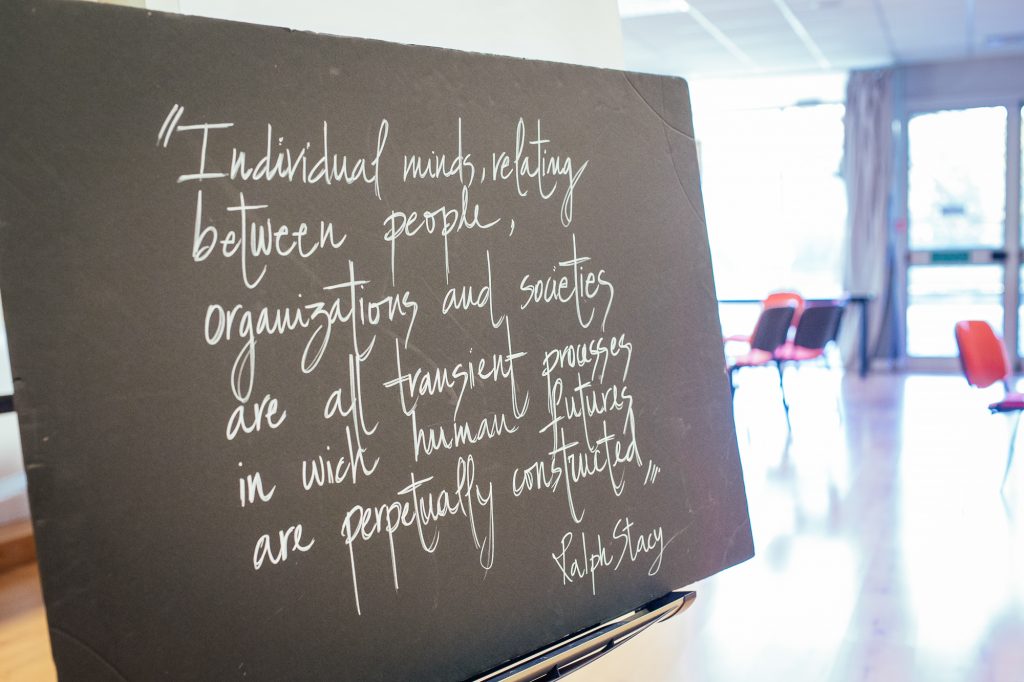Storytelling

Tales to remember
Overview
Participants tell stories related to their professional experience of the topics being explored. Using real experience helps to translate theoretical concepts into concrete examples, and provides a sense of trust and authenticity to the material. The stories related do not have to necessarily be personal: they can convey complex patterns and nuances in projects, programmes and even organizations.
How to use it
- Introduce concepts and explore values.
- Build skills in communication, knowledge sharing, active listening and reflection.
- Evoke powerful emotions and creative insights around a specific topic.
- Encourage respect for diversity of beliefs and values coming from individual and collective experiences.
- Can be used in Phase 1 of the Blended Learning Approach to evaluate interests and capacities from a distance.
- Reinforce lessons learned and reflect on experiences of courses in Phase 3 of the Blended Learning Approach.
- Translate learning events into stories to demonstrate that participants’ contributions were valued.
- Not suitable for routine situations or exercises that require objectivity in the reporting process.
How to apply it
Start:
- Set clear learning objectives for the storytellers, whether facilitator, participant or expert. These may include introducing a subject, sharing information or telling participants about diverse personalities.
- Invite storytellers to prepare a relevant and powerful story. Remind storytellers to keep the following points in mind:
- Include elements that evoke emotion, attract attention and have interesting aspects.
- Use the perspective of a single protagonist to allow participants to empathize more easily.
- Be descriptive, because people remember sequences of images more than words.
- Use images, sounds and video to complement the storytelling process.
- Focus on the narrative aspects, to avoid doing the analytical work for the participants.
- Avoid discussing morals or subjective perspectives that can limit participants’ creativity later on.
Time/Steps:
- Be appropriate to group background, culture and composition. E.g. sit in a circle, lecture-style, use videos or screencasts.
- Close the storytelling exercise with a comprehensive debriefing and reflection, as a group or individually, to lead into a related learning activity, such as a Case Study.
How to adapt it
- Post-cards: Participants bring an object or picture to prompt an individual story related to the topic. These attract attention and provide anchors for telling the stories. Alternatively, participants display them around the room with their name and key words on the back, and then discuss them during lunch and breaks.
- Short stories: In small groups, share personal stories in about 20 minutes. Each group chooses one story to develop or creates a new story that combines multiple tales. A reporter from each group shares the story with everyone.
- Speed dating stories: Arrange chairs in two rows facing each other. Participants sit knee-to-knee.
- The first participant tells a story in 2-3 minutes,finishing when a bell sounds. The second person then tells their story in 2-3 minutes, and the sound is repeated.
- One row of participants moves one chair to the left, and the new “couples” exchange stories.
- After some rounds, invite participants to stand behind whoever told them the most inspiring story.
- Identify the top 3 most interesting stories in the room and use these for a group discussion reflecting on the experience of others, common themes, contradictions and insights.
- Digital Story Telling combines narrative stories with digital content such as images, sound and video, to create a short movie. See Resources below for a free online tool.
- Write a short script related to the topic and identify appropriate digital files, which will evoke an emotional response to solidify the learning.
- Pace the story carefully, with time to absorb important details and moving more quickly through superficial information. The graphics department will have the necessary editing technology.
- This method can be particularly powerful as an online component in Phase 1 or 3 of the Blended Learning Approach. Make sure in advance that the participants have internet access.
Case study
Title:
Atory telling to illustrate concepts in context
Activity:
Indigenous and tribal peoples: Rights and development
Contact:
T.Tekle@itcilo.org (ILSGEN), M.Lisa@itcilo.org (DELTA)
Description:
Participants working on indigenous peoples’ issues in selected countries were asked in advance via email to prepare a presentation regarding challenges to implementing Convention No. 169.
One member of the UN Permanent Forum on Indigenous Issues described challenges in Paraguay and Bolivia regarding forced labour, based on his experiences in missions there. His insights helped translate the principles from a previous presentation into reality. The story was followed by a group discussion. This method was very well received by participants and is used in many other courses to convey concrete and complex experiences.
Tips
- Pose provocative questions that elicit honest experiences at every stage of Storytelling.
- Elicit reflection/stories by asking questions, such as when participants felt inspired, became part of a team or community, saw changes occur, or learned a valuable lesson about the course subject.
- Pair participants with diverse backgrounds as a team-building exercise to generate interesting dynamics.
Resources
- Explore examples from the Centre of Digital Storytelling: https://www.storycenter.org/stories
- Seven Things You Should Know About Digital Storytelling: https://prezi.com/gtisomxtgn_c/7-things-you-should-know-about-digital-storytelling/









